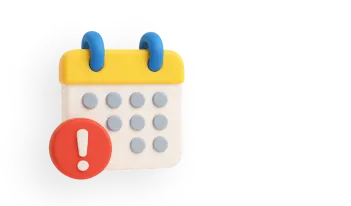Definition of Minutes of Meeting (MoM)
Minutes of Meetings (MoM) are the official records that record the most important points discussed during a meeting. They contain the main discussions, decisions, resolutions, action items, and the attendees. MoM is a formal record that keeps the participants updated and ensures accountability for the assigned tasks.
Steps Involved in Recording MoM
- Pre-Planning
- Set the Agenda: Clearly outline the purpose and agenda for discussion.
- Invite Participants: Ensure all relevant stakeholders know the meeting date, time, and agenda.
- Assign a Note-Taker: Identify who will record the minutes.
- Prepare for Recording: Determine if it's a notepad, laptop, or software application.
- Record-Taking
- The note-taker should capture the key discussion points, decisions, and action items.
- Use clear and concise language to avoid ambiguity. Ensure all relevant details, such as attendee names, times, and resolutions, are noted.
- Writing or Transcribing the Minutes
- Once the meeting concludes, the recorded notes should be transcribed into a formal, readable format.
- Ensure the document is logically structured, with sections for attendees, agenda items, decisions, and action points.
- Sharing the MOM
- Distribute the final version of the minutes to all participants and other relevant stakeholders via email or other electronic means.
- This ensures that everyone is aware of the outcomes and their responsibilities.
- Filing and Storage
- Store the MoM systematically in a digital document management system or physical files for future reference.
- Proper filing is essential because MoM may be used as evidence in legal or compliance matters.
Contents of MoM
A well-read MoM must usually contain the following:
- Date and Time: The date and time that the meeting has taken place should be stated
- Participants: Attendees' names and those not present should be indicated.
- Agenda: All topics considered in the meeting should be reflected.
- Key Discussions: Sum up the key matters and deliberation.
- Decisions and Resolutions: Outcomes of each agenda item should be captured.
- Action Items: Activities assigned, individually responsible, and due dates.
- Next Meeting Date: If scheduled, mention the tentative date for the next meeting.
Best Practices for Writing MoM
- Timely Documentation: Record and finalise the MoM as soon as possible after the meeting while the discussions are still fresh in memory.
- Clarity and Conciseness: Use simple, straightforward, and concise language. Avoid jargon or complex sentences that may confuse readers.
- Accuracy: This should include ensuring that all points of importance or decision-making were written down properly. In their absence, arguments and confusion are inescapable later on.
- Use of Templates: Use pre-designed MoM templates to save time and ensure consistency in formatting.
- Revisions: The draft of the MoM should be checked for completeness and correctness before passing on to the participants.
Advantages of MoM
- Clarity and Accountability: MoM clearly records what happened during the meeting, including decisions made and action points assigned. This brings about accountability among participants.
- Reference for Future Meetings: MoM acts as a reference point for future meetings, where participants can track progress and follow up on assigned tasks.
- Legal Documentation: MoM acts as legal proof for any cases involving important corporate decisions, contract matters, or compliance issues.
- Improved Communication: Through MoM, all the people who were part of the meeting are aware of the outcome and subsequent actions to be taken.
- Consistency in Business Processes: Regular documentation of meetings helps maintain consistency in decision-making and execution across the organisation.
Key Takeaways
- Adoption of Digital Tools for Meeting Documentation
- Many organisations are increasingly adopting digital tools and automated software for recording and managing meeting minutes, improving accuracy and saving time.
- MOM in Virtual Meetings
- With the rise of virtual meetings due to remote work, companies are placing greater emphasis on recording detailed MoM to ensure clarity in communication and task allocation across teams.
- Compliance Requirements
- Regulatory bodies in various sectors now mandate proper documentation of board meetings and key stakeholder discussions, making MoM an essential compliance tool.






